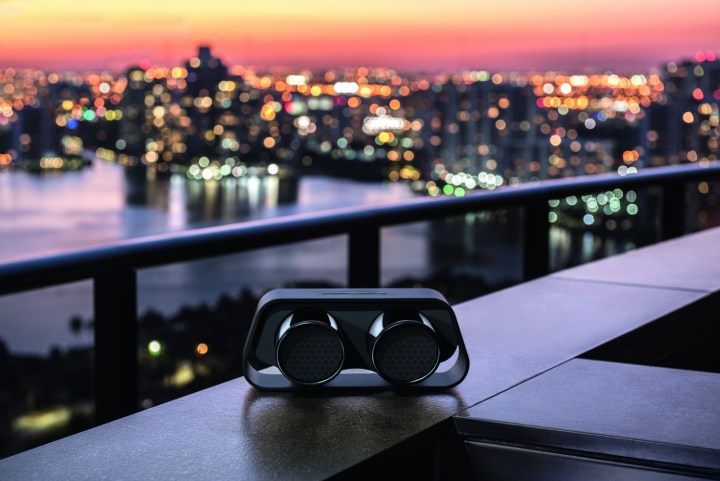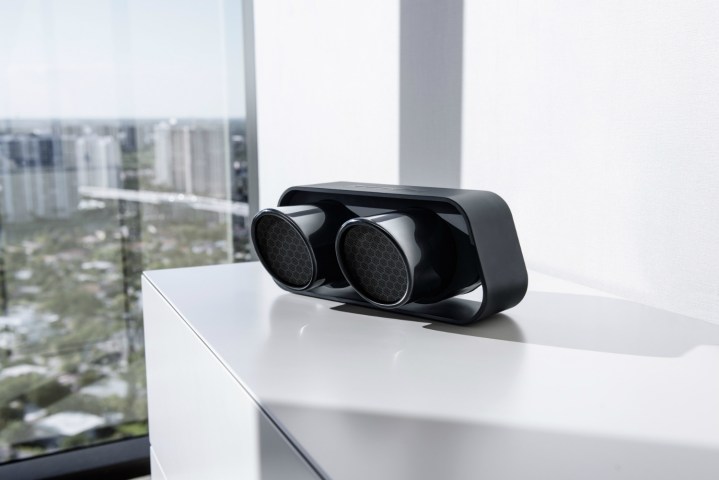
For gearheads, the GT3’s iconic exhaust architecture is unmistakable, featuring twin ports wrapped in a rounded, trapezoidal housing. Porsche Design has replicated that aesthetic, except instead of the roar of an H-6 engine, you’ll be hearing your favorite tunes pumped out with power and clarity.

The high-gloss speaker, built from “Porsche-grade” aluminum, combines the convenience of Bluetooth wireless connectivity with the sound signature of larger, heftier speakers. Sixty-watt system output and aptX support ensure the highest quality of sound, while an impressive 24 hours of battery life keep the party going for as long as possible.
Hosting a bigger gathering? The 911 Speaker has you covered there, too. Buy two, and you can synchronize the speakers, utilizing them as left and right channels in stereo mode or simply using Papty mode to play the same music in separate rooms.
The 911 Speaker isn’t Porsche Design’s first foray into the home audio market. True Porsche aficionados should appreciate the 911 Soundbar, which integrates both the rear silencer and the exhaust ports from a 911 GT3 to create a collector’s item that also pumps out music with force. The soundbar also features a 2.1 virtual surround sound system that supports DTS TruSurround signal processing to ensure maximum clarity via Bluetooth connection.
If $2,500 is a bit spendy for you, the wireless Gravity One speaker offers a more affordable way to get some gorgeous Porsche Design tech into your home. “Sit-anywhere” Uni-Q technology projects sound 360 degrees around the Bluetooth-enabled Gravity One, which was manufactured with the assistance of British speaker heavyweight KEF. It costs $380.
If you’d like to get your hands on the 911 Speaker, you’ll have to wait a few months. The speaker will release in mid-October and it’ll cost a cool $550 (482 euros, depending where you’re located). The speaker will be available in select Porsche Design stores and Porsche centers, as well as online at the Porsche Design website.


